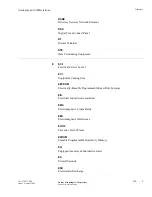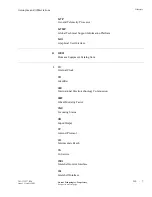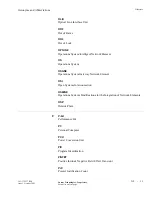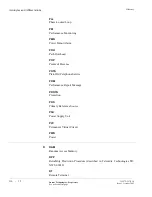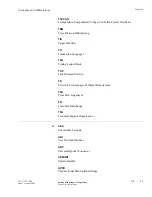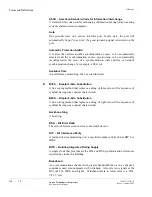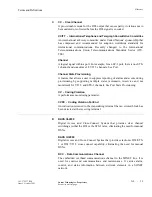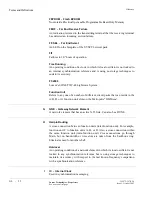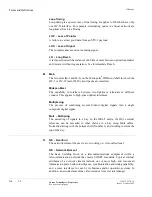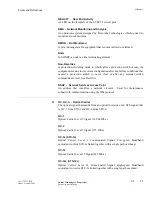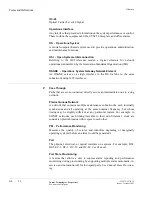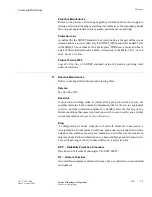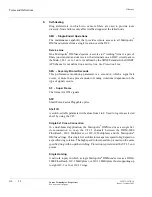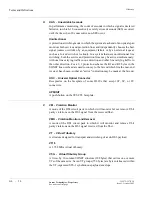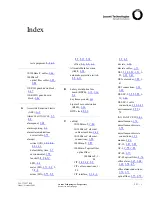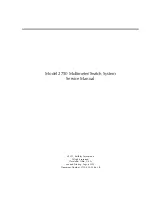
...........................................................................................................................................................................................................................................................
Glossary
Terms and Definitions
G L - 1 8
Lucent Technologies - Proprietary
See notice on first page
365-372-327 R2.0
Issue 1, October 2003
.............................................................................................................................................................................................................................................................
ASCII - American Standard Code for Information Interchange
A standard 8-bit code used for exchanging information among data processing
systems and associated equipment.
Auto
One possible state of a service interface port. In this state, the port will
automatically be put "in service" if a good incoming signal is detected on the
port.
Automatic Protection Switch
A feature that allows another synchronization source to be automatically
selected and the synchronization source provisioning to be automatically
reconfigured in the event of a synchronization source failure or network
synchronization change, for example, a fiber cut.
Available Time
In performance monitoring, the 1-second intervals.
B
B3ZS - Bipolar 3-Zero Substitution
A line coding method that replaces a string of three zeros with a sequence of
symbols having some special characteristic.
B8ZS - Bipolar 8-Zero Substitution
A line coding method that replaces a string of eight zeros with a sequence of
symbols having some special characteristic.
Backbone Ring
A host ring.
BER - Bit Error Ratio
The ratio of bits received in error to the total bits sent.
BIP - Bit Interleaved Parity
A method of error monitoring over a specified number of bits, that is BIP-3 or
BIP-8.
BITS - Building Integrated Timing Supply
A single clock that provides all the DS1 and DS0 synchronization references
required by clocks in a building.
Broadband
Any communications channel with greater bandwidth than a voice channel;
sometimes used synonomously with wideband. Also refers to signals at the
DS3 (44.736 Mb/s) and higher. Wideband refers to lower rates (i.e. DS1,
VT1.5, etc.).


